This article is part of the 31 Days of Pinterest Hacks series. Find the main page for this series here.
Flannel boards were my favorite when I was a student in kindergarten. I remember being fascinated by these pieces of fabric sticking together without glue. And my kindergarten teacher had such an amazing variety of silhouettes I was always excited to see the next set.
But, once again, sharing flannel board play with my son would not happen unless I made some adaptations.
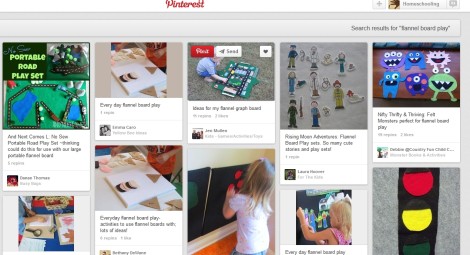
Pinterest is overflowing with images of children playing with flannel board sets. I imagine them telling stories and engaging in hours of imaginative play. But, a disabled child may show little to no interest in these would-be fantasy-grabbers unless we adapt/modify their use.
Why flannel boards may be a challenge for neurodivergent/disabled children
- A child cannot be expected to engage in imaginative play when they are not developmentally appropriate.
- The 2-dimensional nature of felt and flannel might be tricky for a child to manipulate if they require extra support with fine motor activities.
- The texture might be an issue for children with tactile sensory aversions.
- Silhouettes are sometimes difficult for some children to decipher.
- Small parts can be a choking hazard for children who still mouth everything.
Suggestions for adaptations/modifications for flannel boards
- Don’t expect to use flannel boards for imaginative/pretend-play if the child is not developmentally ready. If the child isn’t ready for pretend or imaginative play with playscapes like a dollhouse or farm animal set (and played within their intended use), then the child likely isn’t ready for imaginative flannel board play. That doesn’t mean you can’t use flannel boards altogether—just not for free-play/pretend play just yet.
- Begin by modeling what one does with a flannel board. I use a flannel board as an accompaniment to storytelling. When I read or tell a story, I have the flannel board out with my cut-outs and use them as visual reenactments of the story. The child may show little interest the first few times you do this. That’s OK. You simply want to be modeling the use of the flannel board. It’s an added visual as you read, and the child’s interest will likely increase with repetition.
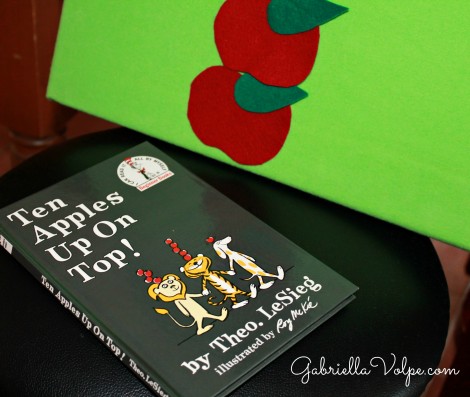
This board is propped up on a stool and against a counter, bringing it to eye level when my son is in his adapted chair.
- Use simple, large, and obvious shapes. Whether you buy pre-cut sets or make your own, it’s important to consider these three elements: large/oversized, simple, and obvious shapes. In other words, you want apples that look like apples and rabbits that look like rabbits. The child will be unable to connect with the image if it just looks like a blob sitting on board. Even if the child isn’t ready for abstract images (as opposed to the real apple), it’s OK. Your goal is to eventually understand that this board holds things that have some kind of meaning/purpose. With the repetition of seeing this board, interest will develop.
- Connect the flannel board objects with real objects. When using the apple flannel board, I always have an apple out and repeat, “apple” (while holding up the real apple) and “apple” (while showing the flannel board apple).
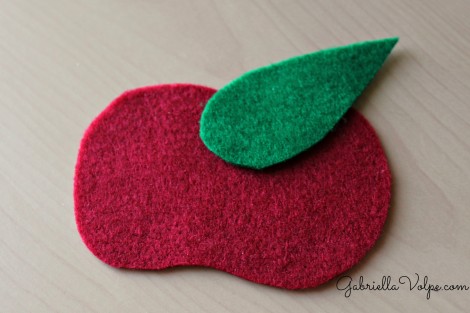
Cut large and obvious shapes. Be sure to secure the multiple layers properly. I had originally used permanent fabric glue, but the pieces eventually came apart. Consider stitching with embroidery thread if you want small pieces to stick onto larger ones.
Flannel Board Storytelling – Free!
10 flannel board storytelling prompts to encourage creativity, connection, and communication for neurodivergent and disabled learners.
Sign up to have FREE download delivered straight to your inbox!
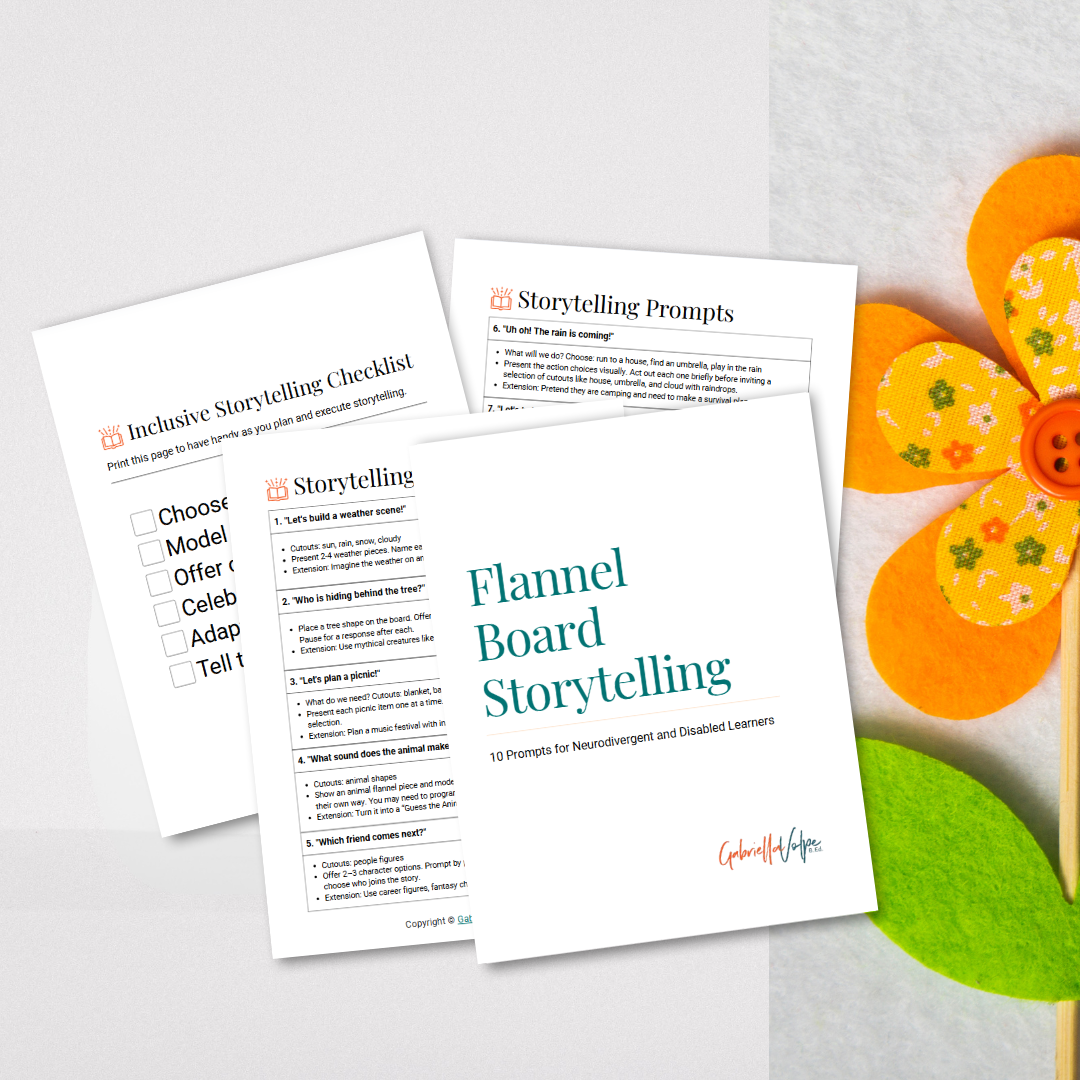
By signing up, I’ll also add you to my mailing list. You can unsubscribe at any time.
- Connect flannel board objects with your weekly/monthly theme or story. It is beneficial to reinforce words and skills by having them show up throughout the day in many different contexts. While variety might work for children already in the pretend play stage, this would only confuse the child who is just beginning to explore flannel board use.
- Allow the child to touch the flannel and felt. You don’t even need to have defined shapes yet. Start with a large sheet of felt or a large flannel blanket in the sensory bin (day 1) and have the child explore these textures for some time. Have them feel them on different parts of their body: face, arm, feet, etc. Always follow their lead and never pressure a child to play with felt or flannel (or anything else, for that matter).
- Eventually, have the child touch the large cut-outs. When you are sure that the child won’t gag from touching flannel, hand them a large felt cut-out from your activity and allow them to explore. You can work on having them “tap, tap, tap” the felt onto the flannel board. See what else they do and reinforce it with language/verbal routines.
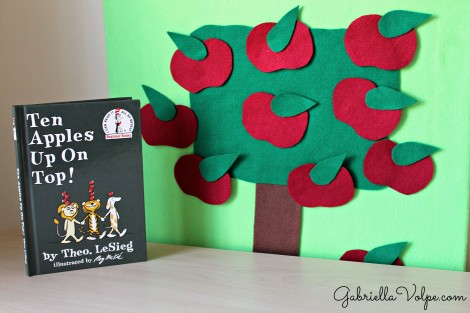
Try to use one set for multiple uses. I used the apples set with this book and other apple books. But, I also used them with apple songs and rhymes. A little work cutting them out goes a long way if you use your imagination.
- Let the child participate in storytelling with the flannel/felt board set. It may take several weeks of observation and exploration, but eventually, have the child take part in placing the felt shapes on (not off yet, as that may be difficult—being two-dimensional) the board as you tell a story. I recommend doing this at their adapted seat or at a table so that you can lay the flannel board flat on the table. This prevents the cut-out from falling off and disappointing the child. You may have to use hand-over-hand (with consent) and repeat, “tap, tap, tap” when placing each piece. Don’t forget to praise when the shape is down: “Hurray! You did it! Hurray!”
- Like sensory bins, it’s wise to build up the amount of time a child plays with flannel boards. “Play,” in this case, includes just paying attention to you as you read and placing cut-outs on the flannel board. Start with 3 to 5 minutes and build up to 10, 15, and 20 minutes over a span of weeks or months. Some children need to be given time to develop skills, not insistence on keeping working on a task longer.
- Place loop and dot hooks on the back of flannel cut-outs when learning to “pull” felt pieces off. The loop and dot hook elevate the felt to make it easier to grasp. Be sure to stitch (not glue) the dot for safety purposes.
- Some additional ideas for a flannel board set: count up or down using the pieces in accordance with a song or rhyme; themes can be seasonal, color-related, shape-related, or even holiday-related; connect them to the child’s favorite story/song; use AAC along with the matching felt image. Flannel boards can be used with older children as well. Ask yourself how to use felt cutouts with language or math activities. This multi-sensory, hands-on approach is wonderful for learning experiences of all types!
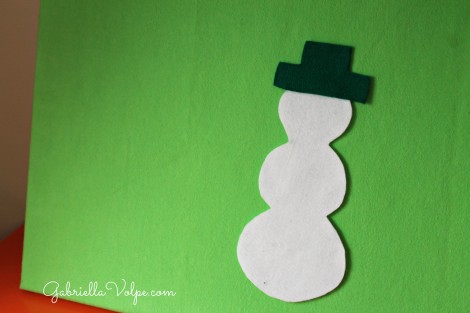
This is a seasonal flannel board set. I kept it simple, large, and obvious. For safety reasons, I didn’t include details like eyes and buttons.
Never create small parts unless you know the child can handle them safely, and always supervise felt play.
How do you use flannel boards?
I offer private consultations for parents, educators, and clinicians who want personalized strategies. I’d love to support you.
Related Article:

0 Comments